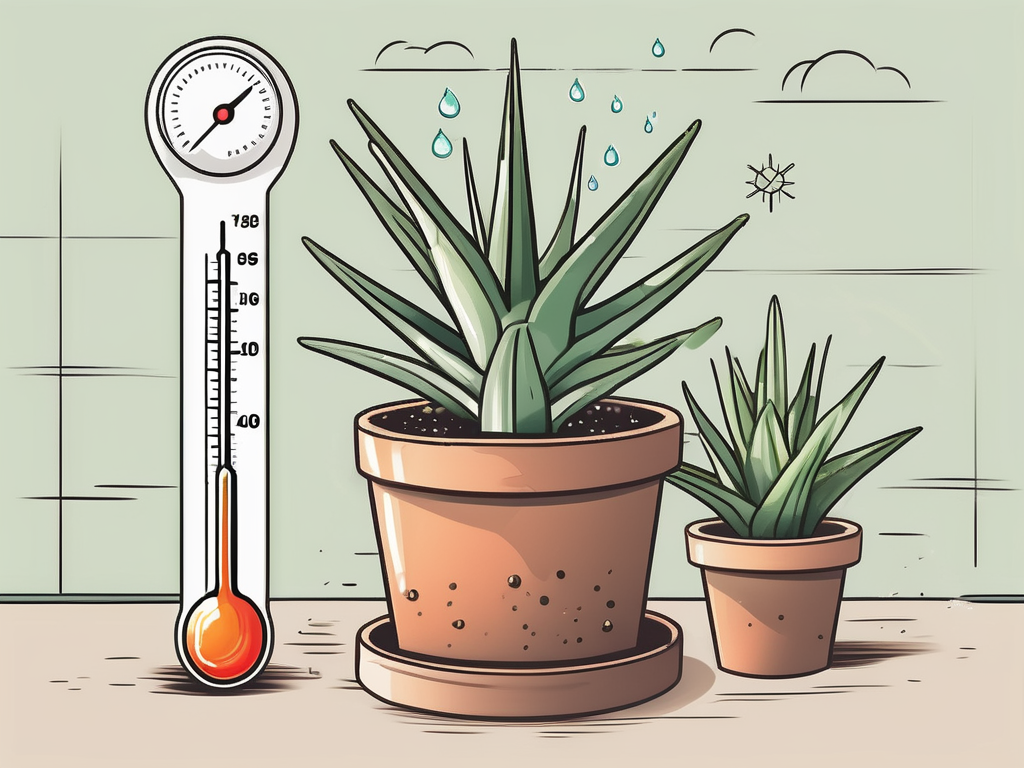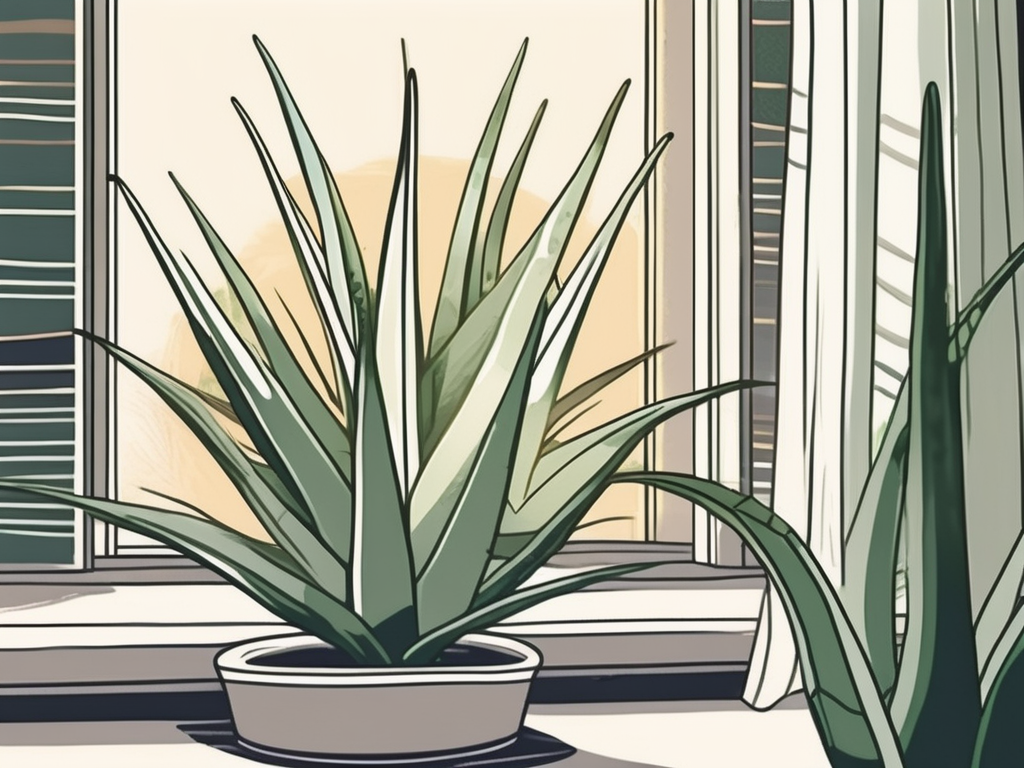
Aloe vera is more than just a pretty face among houseplants; it's a resilient, easy-to-care-for plant with a lot of character. Whether you're using its gel for sunburn relief or simply enjoying its spiky green leaves as part of your home decor, understanding the lifespan of aloe vera can help you keep this plant thriving for years.
In this post, we're going to explore the ins and outs of aloe vera's life cycle, care tips to ensure it lives a long and healthy life, and ways to incorporate it into your home design. So, if you're ready to make your aloe vera plant a lifelong companion, read on!
1. The Natural Habitat of Aloe Vera
Before we get into the specifics of how to care for aloe vera, it’s important to understand where this plant comes from. Native to the Arabian Peninsula, aloe vera grows in arid climates, which explains its hardy nature and ability to store water in its fleshy leaves.
In the wild, aloe vera can be found thriving in sandy, well-drained soils. The plant has evolved to withstand harsh sun and infrequent rainfall, making it perfect for those who might not have the greenest of thumbs. It’s a sun-loving plant that appreciates a dry spell now and again.
For plant lovers in less arid environments, it’s crucial to mimic these conditions as much as possible. This means plenty of sunlight, minimal water, and well-draining soil. Don't worry if you live in a cooler climate—aloe vera can adapt to indoor conditions as long as it has enough light.
2. How Long Does Aloe Vera Live?
One of the most common questions plant people ask is, "How long will my aloe vera plant live?" The answer can vary, but with the right care, aloe vera can live for over a decade. Some reports even suggest these plants can last up to 25 years in optimal conditions!
Aloe vera has a relatively slow growth rate, which contributes to its longevity. It doesn’t need frequent repotting, and it doesn’t outgrow its space quickly. This makes it an ideal choice for those who want a low-maintenance plant that’s here for the long haul.
Factors like sunlight, water, and soil quality all play significant roles in determining the lifespan of your aloe vera. Keeping these elements balanced will not only ensure a long life for your plant but also a healthy and vibrant one.
3. Essential Care Tips for Aloe Vera
Caring for aloe vera is straightforward, but there are some key elements to keep in mind to extend its lifespan:
- Light: Aloe vera loves sunlight. If possible, place it in a south- or west-facing window. If natural light is limited, consider supplementing with a grow light.
- Water: Less is more. Allow the soil to dry out completely between waterings. Overwatering is a common mistake that can lead to root rot.
- Soil: Use a succulent or cactus mix that provides good drainage. Adding perlite or sand can help improve drainage.
- Temperature: Aloe vera prefers temperatures between 55°F and 80°F. It’s not frost-tolerant, so bring it indoors if temperatures drop.
- Fertilizer: Feed with a balanced houseplant fertilizer once in the spring and once in the summer. Avoid fertilizing in the fall and winter.
By following these care tips, you'll set your aloe vera up for a long and happy life. Remember, it’s all about balance—too much or too little of anything can stress the plant.
4. Common Problems and How to Solve Them
Even though aloe vera is tough, it can still face some challenges. Here are a few common issues and how to address them:
Overwatering
This is the most common problem with aloe vera. Signs include yellowing leaves, mushy stems, and root rot. If you suspect overwatering, remove the plant from its pot, trim any rotten roots, and repot it in fresh, dry soil.
Pests
Aloe vera can occasionally attract pests like mealybugs and aphids. If you notice these critters, gently wipe the leaves with a solution of water and a few drops of dish soap. You can also use neem oil as a natural pesticide.
Sunburn
Yes, even plants can get sunburned! If your aloe vera's leaves are turning brown and crispy, it might be getting too much direct sunlight. Move it to a spot with indirect light and trim away any damaged leaves.
By being aware of these issues and knowing how to fix them, you’ll keep your aloe vera in peak condition.
5. Propagating Aloe Vera
Propagation is a fun and rewarding way to expand your plant collection. Aloe vera is particularly easy to propagate, making it a fantastic plant for beginners looking to try their hand at growing new plants.
Aloe vera typically produces "pups," which are small offshoots that grow from the base of the parent plant. Here’s how you can propagate your aloe vera:
- Identify the Pups: Look for small, baby plants growing at the base of your aloe vera. They should have a few leaves and their own root system.
- Remove the Pups: Gently separate the pup from the parent plant, using a clean knife if necessary to cut any connecting roots.
- Let Them Dry: Allow the pups to dry for a day or two. This helps to prevent rot when they’re placed in soil.
- Repot: Plant the pups in small pots with well-draining soil. Water lightly after a few days.
Propagation not only helps you multiply your plant collection but also ensures the survival of your aloe vera lineage if the parent plant begins to age.
6. Incorporating Aloe Vera into Your Home Design
Beyond its medicinal benefits, aloe vera can be a stunning addition to your home decor. Its architectural shape and vibrant green color can bring life to any room.
Here are some ideas to incorporate aloe vera into your home:
- Windowsills: Place aloe vera on a sunny windowsill for a natural and refreshing touch.
- Kitchen Decor: Aloe vera can be a practical choice in the kitchen, where its gel can be easily accessed for burns and cuts.
- Bathroom Oasis: Use aloe vera in the bathroom to add a spa-like feel. Just make sure it gets enough light!
- Desk Companion: A small aloe vera plant on your desk can be a calming presence during work.
Mix and match aloe vera with other succulents or houseplants to create layered and textured arrangements. Its low-maintenance nature makes it a versatile choice for various settings.
7. Aloe Vera and Health Benefits
Aloe vera isn’t just about looks! Its gel is rich in vitamins, enzymes, and amino acids, making it beneficial for skin care and overall health.
Here are some of the uses of aloe vera gel:
- Skin Soother: Aloe gel can soothe sunburns, minor cuts, and skin irritations.
- Moisturizer: It can be used as a natural moisturizer for dry skin.
- Digestive Aid: Though not advisable to consume directly from the plant, aloe vera juice is available commercially and is said to aid digestion.
While aloe vera offers numerous benefits, it’s important to use it carefully, especially when ingesting, as some parts of the plant can be toxic if consumed in large amounts.
8. Seasonal Care for Aloe Vera
As seasons change, so should your care routine for aloe vera. Here’s a quick guide to seasonal care:
Spring and Summer
This is the growing season for aloe vera, so it’s the best time to fertilize and water regularly, though still sparingly. Ensure your plant gets enough sunlight but not too much direct midday sun.
Fall and Winter
Growth slows down, so reduce watering frequency. Keep the plant in a sunny spot, but avoid cold drafts that could harm it. There’s no need for fertilizer during these months.
By adjusting your care routine with the seasons, you’ll help your aloe vera thrive all year long.
9. Choosing the Right Pot and Soil
Picking the right pot and soil is crucial for the health of your aloe vera. Here’s what to consider:
Pot Selection
Choose a pot with drainage holes to prevent water from sitting at the bottom, which can lead to root rot. Terra cotta pots are a great choice as they allow the soil to dry out more quickly.
Soil Mix
A well-draining soil mix is essential. You can use a cactus or succulent mix or create your own by combining regular potting soil with sand and perlite.
- Repotting: Aloe vera doesn’t need frequent repotting. Every few years, when the plant outgrows its pot, is sufficient.
By selecting the appropriate pot and soil, you’re providing your aloe vera with a strong foundation for growth.
Final Thoughts
Aloe vera is a remarkable plant that offers beauty, resilience, and practicality. By understanding its natural habitat, lifespan, and care requirements, you can enjoy the benefits of aloe vera for many years. Whether it's a centerpiece in your home design or a go-to for minor burns, aloe vera is a plant that brings value beyond aesthetics.
At Cafe Planta, we're passionate about helping you care for your plants. We offer a variety of houseplants, including aloe vera, alongside care accessories and plant-themed apparel. If you have any questions or need advice, feel free to email us or send a message on our Instagram. We're here to support you on your plant journey!
























